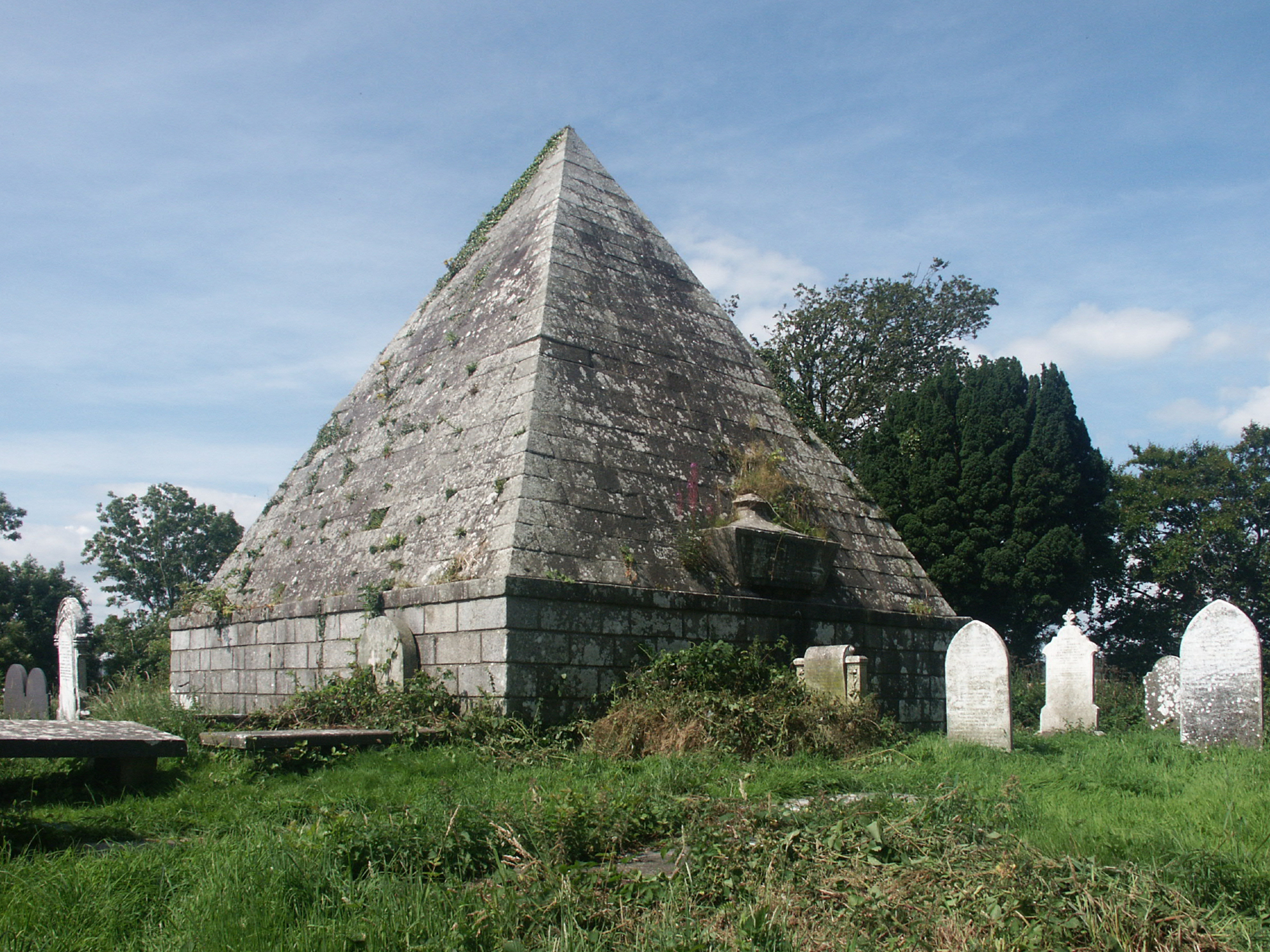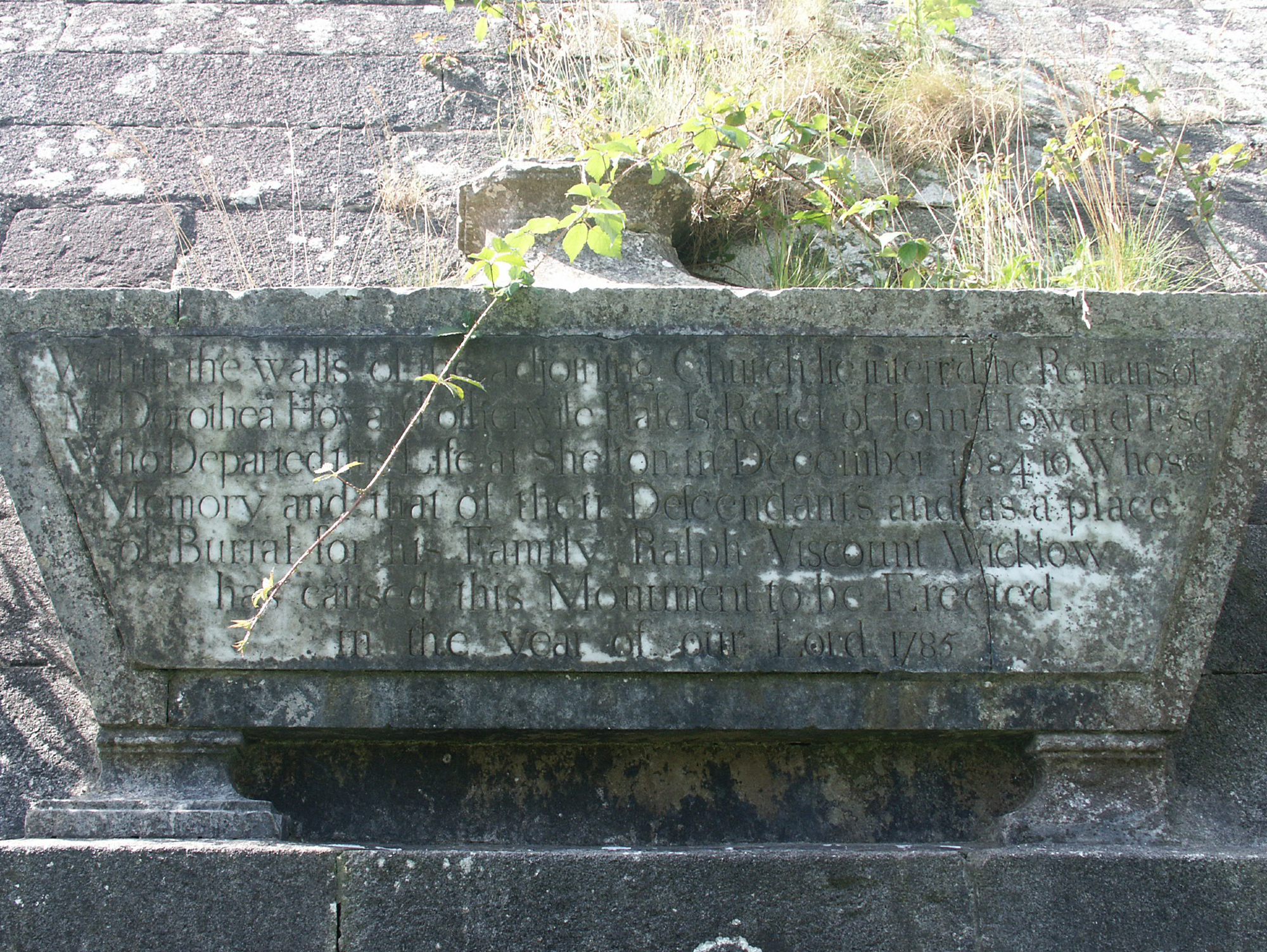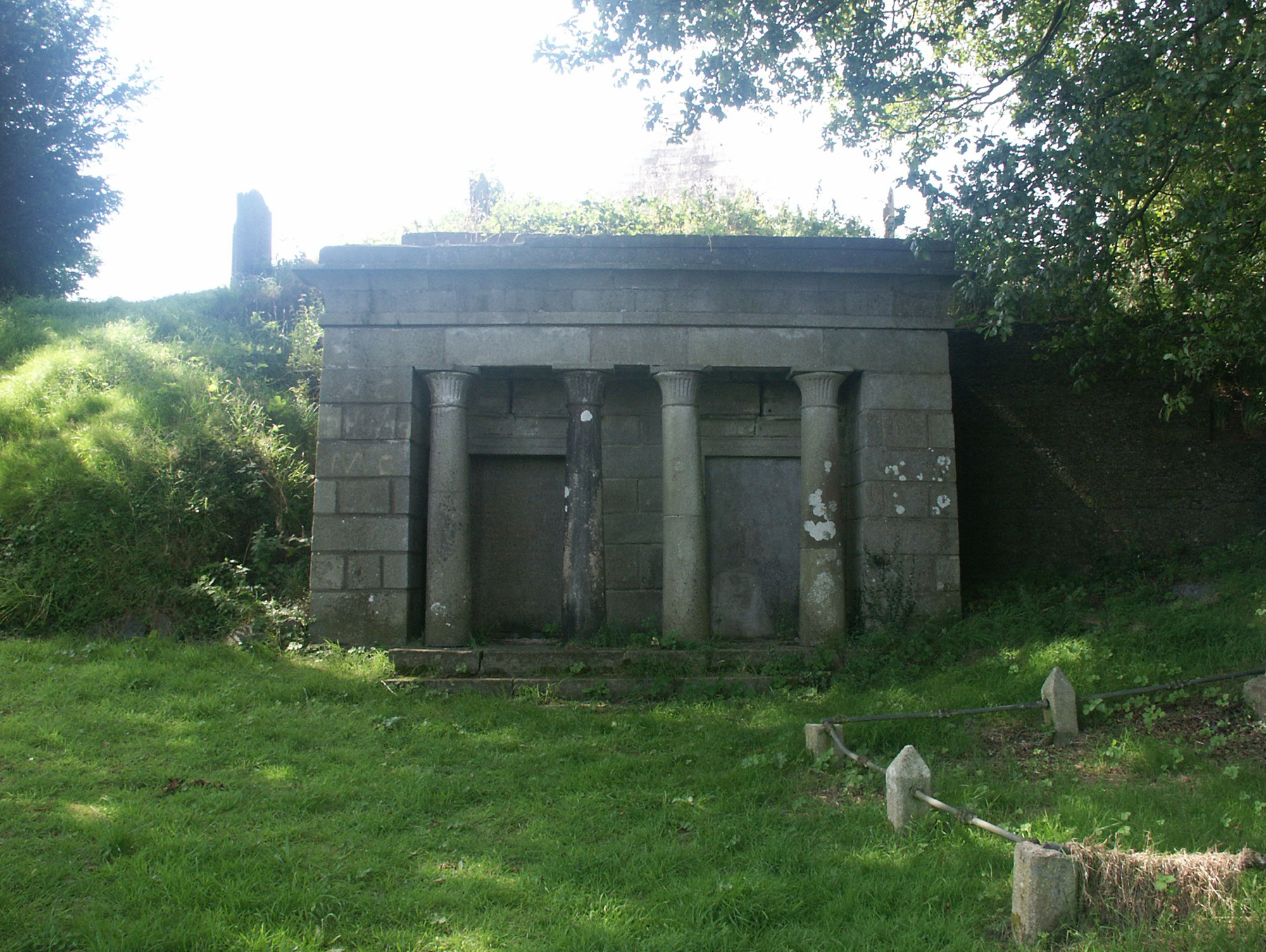Building of the Month - April 2013



Sitting on a small rise a mile north of Arklow, overlooking the Avoca River, is a monument described by Sir John Betjeman (1906-84) as the largest pyramid tomb ‘beyond the banks of the Nile’ (fig. 1). It stands on the highest position in the ancient cemetery of Kilbride, dwarfing the ruins of the adjacent medieval church, and is easily seen from most points within a two-mile radius.
When Ralph Howard (1726-86) of Shelton Abbey was made first Viscount Wicklow in 1785, he decided that no longer would a departed Howard be buried in cold clay; their bodies would be housed in an edifice more befitting aristocracy. Philosophical Enlightenment was at its height and to speak of Athenian, Egyptian or Roman architecture was to display not only education but good taste. The new mausoleum, Howard decided, would be a pyramid.
The design is believed to be the work of the English sculptor and stonecutter, Simon Vierpyl (c.1725–1810), although he is not specifically named in Account of costs and materials for the building of a mausoleum at Kilbride…commissioned by Lord Wicklow (16th December 1785) [NLI MS 38,575/4 (2)] . Vierpyl was well acquainted with Enlightenment taste having spent almost a decade in Rome producing souvenir copies of ancient sculpture for the well-heeled on their Grand Tour. He was brought to Ireland by James Caulfeild (1728-99), fourth Viscount Charlemont, and soon became known for his designs based on ancient civilisations. He worked closely with Sir William Chambers (1723-96) on the Casino (1758-76) at Marino; Castletown (1759; 1766) in County Kildare; and Charlemont House (1763-75) in Rutland Square [Parnell Square], Dublin. According to The Dictionary of Irish Architects 1720-1940 he appears to ‘have done relatively little purely sculptural work’ in Ireland, being employed chiefly as a stone-carver, mason and clerk of works.

The outer skin of the pyramid is of finely-cut silver-grey granite ashlar. The base is approximately twenty-seven feet square, the walls are perpendicular to the height of six feet, at which level the slopes begin, meeting at the pinnacle some thirty feet above ground level. A sarcophagus on the north side records that the monument was erected in memory of an earlier Howard and as a place of burial for the family (fig. 2). North of the pyramid is a small Egyptian-style structure with a temple front that is often taken for part of the mausoleum: this, however, leads to a second chamber housing the remains of a minor branch of the Howard family (fig. 3).

The first interment was of Ralph Howard’s daughter, Isabella, who was nineteen when she died in December 1784. As the pyramid was not built until the following year, it is reasonable to assume that Isabella was buried in the graveyard and, on its completion, was exhumed and re-interred. The last interment for which we have a record took place in 1823 but folklore states that there was another. For weeks following the interment of an infant family member, tenants living at Kilbride reported the sound of a child crying at night. The body was, we are told, removed and interred elsewhere, after which the crying is said to have stopped. The pyramid was sealed and never used again.
FURTHER READING
Craig, Maurice and Craig, Michael, Mausolea Hibernica (Dublin: The Lilliput Press, 1999)
Back to Building of the Month Archive